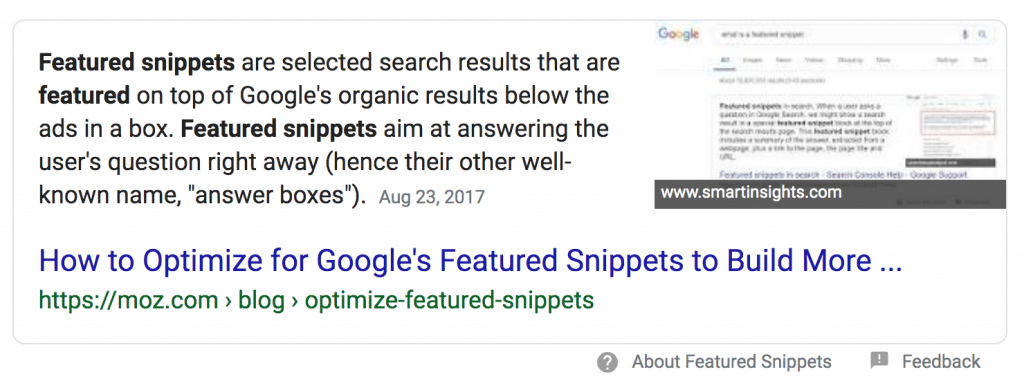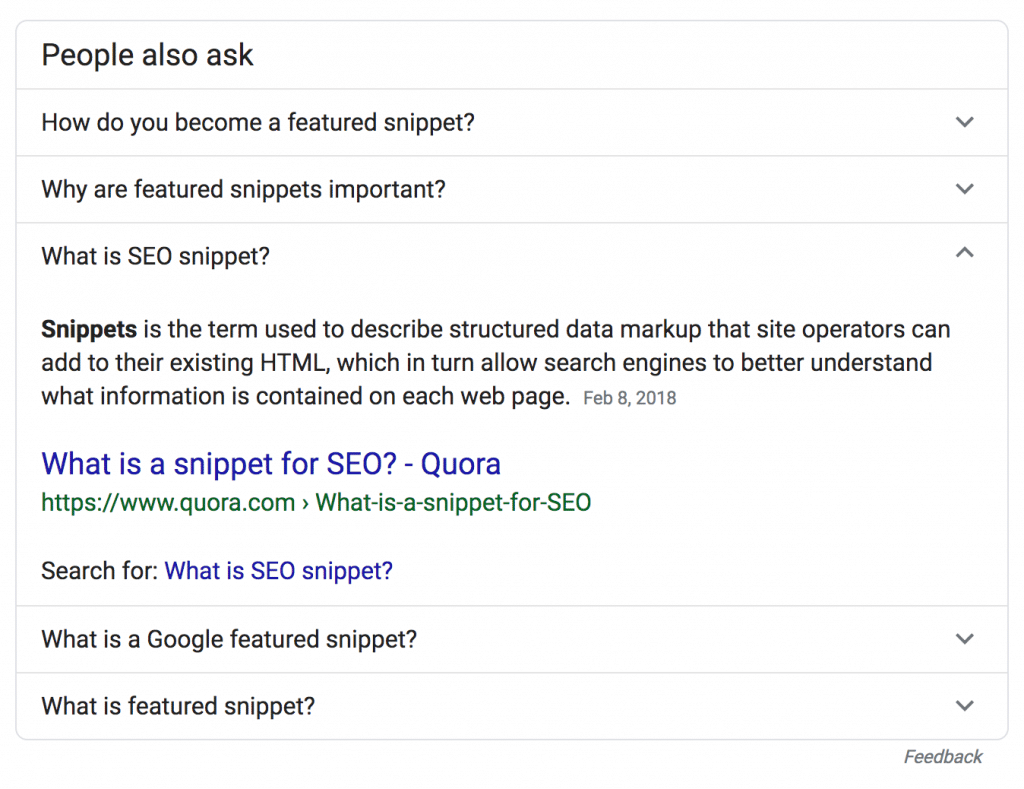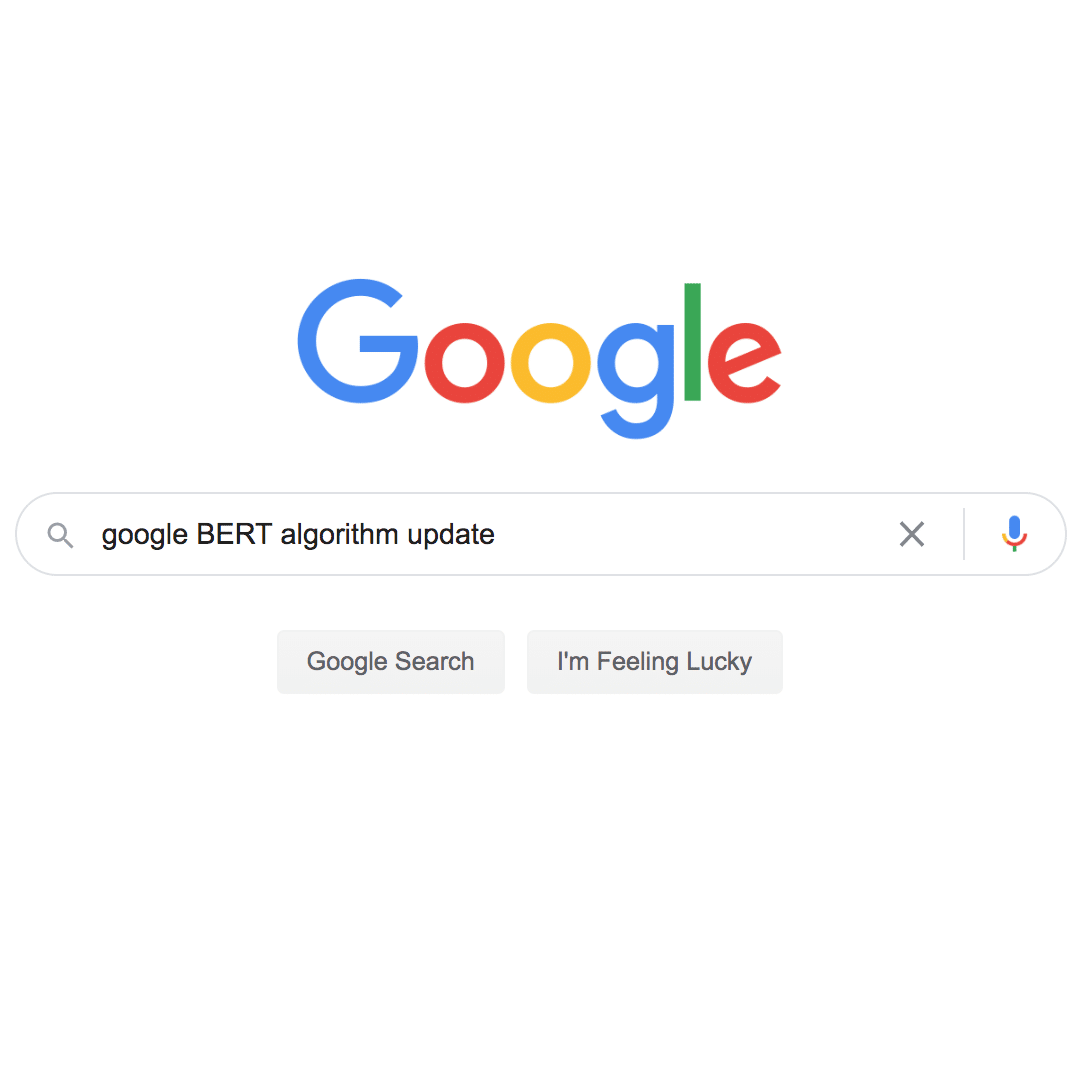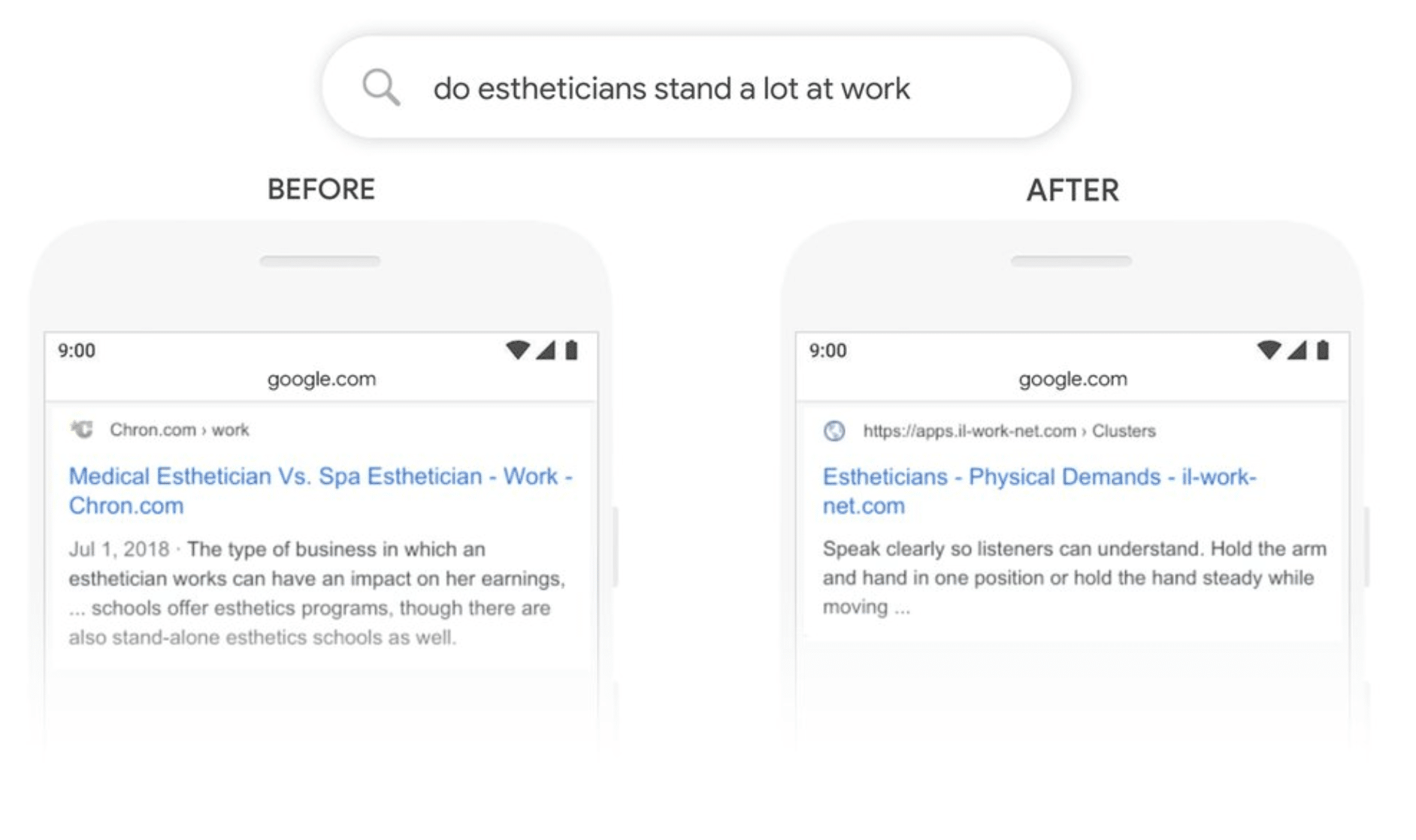Table of Contents
On October 24, 2019, Google launched its latest algorithm update. The Google BERT algorithm update is the most significant step in Search Engine Optimization (SEO) in the past five years. In a nutshell, BERT allows Google to process search queries that resemble natural, spoken language better and deliver more accurate results, faster.
This new update makes professional copywriting and SEO services more critical than ever. Learn how BERT affects your online traffic and what you can do about it!
What is the Google BERT algorithm update?
BERT stands for Bidirectional Encoder Representations from Transforms. Transformers are models that process words in relation to other words in a sentence when put into a search bar. The Google BERT algorithm update combines pre-training with the bi-directionality of a transformer’s encoder, which allows BERT to interpret a word’s meaning by looking not just at the word itself, but the words that come before and after. The model is a natural language processing, pre-training approach, that will help Google understand natural language better.
Simply put, the Google BERT algorithm update lets you type longer, more conversational queries into Google’s search bar and get accurate search results. You no longer have to enter the correct keywords to get the answer you seek.
How will BERT impact SEO and site owners?
The Google BERT algorithm update affects organic search results and featured snippets. But because BERT is such a complex system, it pushes the limits of Google’s hardware and is only used in 1 in 10 searches in the US.
For those searches impacted by BERT, the sequential order of words and context around the keyword will now matter. For example, small words such as “of” and “to” will be taken into account. Pronouns, too, will be processed “smarter” thanks to BERT’s bi-lateral nature.
By reading and understanding the context around the keywords in the query, Google will help users find what they’re looking for instead of just giving them information related to the keywords. The context around a keyword will affect organic search ranking and what sources Google displays in featured snippets.
For example, if you typed the question “do estheticians stand a lot at work” into Google’s search bar, you wouldn’t have found the answer you were looking for pre-BERT.
Now, after the BERT algorithm update, Google’s search results display the answers that match your intent, not just results that contain keywords within your query.
See Google’s blog post about “Understanding searches better than ever before” for more examples of queries before/after the BERT update.
How to “optimize” your website for BERT
Following some of Google’s algorithm updates, you or your SEO could apply minor changes to your site to earn new or maintain current positions on the SERP. After the Penguin update in 2012, for example, disavowing spammy links would put you in Google’s good graces.
But the Google BERT algorithm update doesn’t work that way. You can’t “optimize” your site for this most recent algorithm update with technical SEO updates. And BERT doesn’t replace other algorithms either.
The only way to boost your rankings and earn featured snippets is to do exactly what Google has encouraged all website owners to do from day one: publish amazing content that people want to read while making sure it’s easy for Google’s bots to crawl.
Websites that have well-written content, are organized, include relevant keywords, and follow best SEO practices will likely rank high in Google search results. Less optimized websites with sloppy content will, as they have in the past, hurt your rankings.
It is also important to note that while the BERT model will help answer queries that sound more natural in language, it does not mean stuffing your content with longtail keywords will boost your SEO ranking. Website and content readability are still essential, and keyword stuffing can negatively impact these.
Although you can’t “optimize” your site for the Google BERT update, you can make the most of the latest algorithm update by:
- Matching searcher intent with a SERP Analysis
- Targeting Featured Snippets
1. Match searcher intent with a SERP analysis
As we’ve mentioned, gone are the days of throwing a few keywords into a blog post and ranking on Google’s first page. Previous updates like RankBrain (2015) made sure “searcher intent” was met through machine learning. BERT adds more refinement to the way that Google understands searcher intent.
That means conducting a Search Engine Results Page (SERP) analysis before you start writing a blog post is mandatory.
How to conduct a SERP analysis
Once you have the right keyword or topic idea for your business, type it into Google’s search bar. What results pop up on the first page?
Review the top 10 results and ask yourself whether the topics are relevant to your brand, product, service, and/or cause that you want to write about.
If the answer is yes, you’ve found an excellent keyword/topic to target with your blog post.
Sometimes you’ll come across keywords or think of a topic that is highly relevant to your business but isn’t worth blogging about because the searcher intent does not match what you want to talk about.
For example, if you wanted to write a blog about “how to write a blog using keyword research,” you might enter the term “seo blog” into Google’s search bar. Unfortunately, for that query, most of the top results feature blogs that write about search engine optimization:

But the term “blog writing” produces results that match the searcher intent you would want to target with your content:

So for this example, you would include the keyword “blog writing” in your post. You would also review the other results to find out what type of content is missing or could be improved, and fill that gap with your content!
Before you even start writing a blog, you need to understand what kind of content searchers want for a given query. It’s the only way to survive in a post-BERT world.
2. Target featured snippets
If you or your SEO are not already creating content for featured snippets, your business is missing out on a gold mine for visibility. Conducting featured snippet research is another great way to match searcher intent more closely—and more efficiently.
A featured snippet is a summarized answer to the user’s search query that typically appears at the top of Google’s search results. The snippet will include a brief response to the question, a linked page title and the URL of the page.
Featured snippet placement can be hugely powerful from an SEO and marketing standpoint:
- More SERP real estate
- More clicks overall
- Increased awareness and branding
There are two types of featured snippets:
1. Answer Box (position 0)

2. People Also Ask (PAA)

How to earn featured snippets
You can try to appear in these featured snippets by creating “better” content than what currently displays in Google’s featured snippets.
To write better content, follow these general guidelines:
- Offer users an answer that is clearer and more informative.
- Answer the question within the displayed character count.
- When targeting featured snippets, note their copy and form. If it’s a paragraph, write a paragraph within your post. If it’s a list, write a list. And if it’s a chart, make a chart.
The Takeaway
The Google BERT algorithm update is a major SEO update that refines the search engine’s ability to understand the language used in search queries in context. With BERT algorithms in place, users can type questions into Google’s search engine using natural language (instead of just keywords) and still get accurate results.
To keep your top positions on Google’s SERP (or gain new ones!), make sure your content is well written, technically optimized, and matches searcher intent. Creating content specifically for featured snippets is a straightforward method for matching searcher intent.
Not sure where to start? Request a consultation with an SEO Strategist at Northwest Media Collective to get a copywriter familiar with the BERT update on your team.

